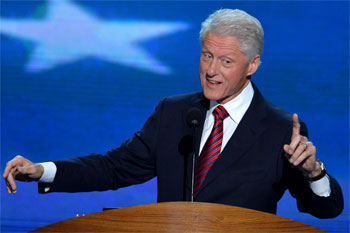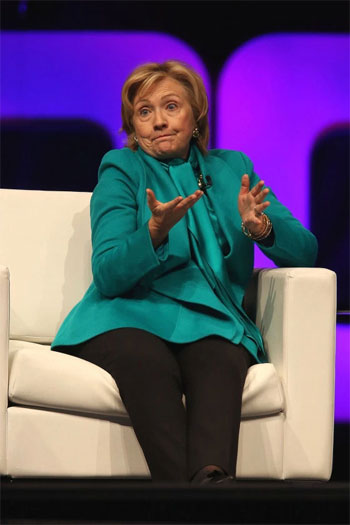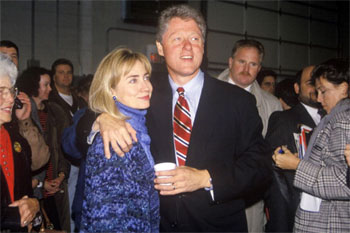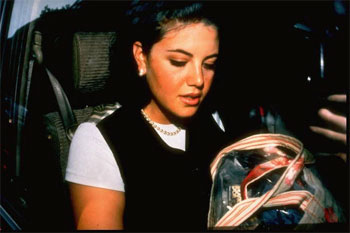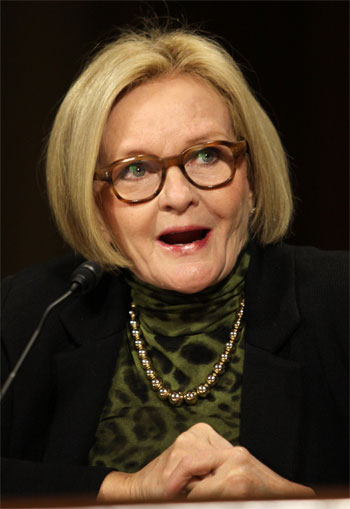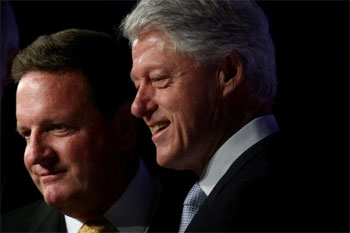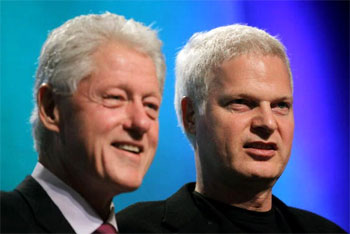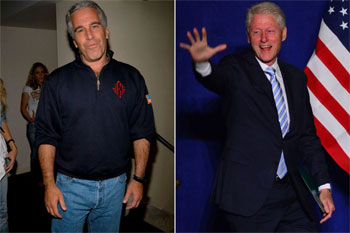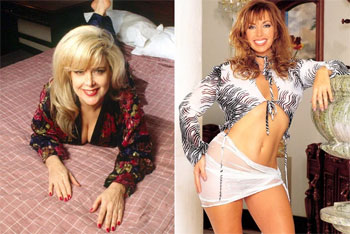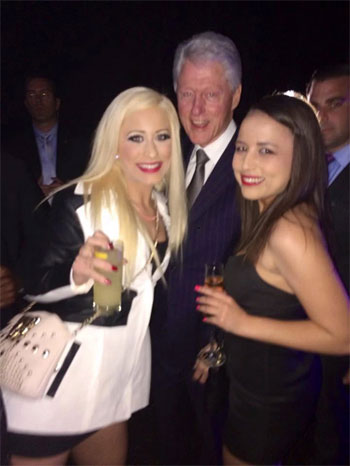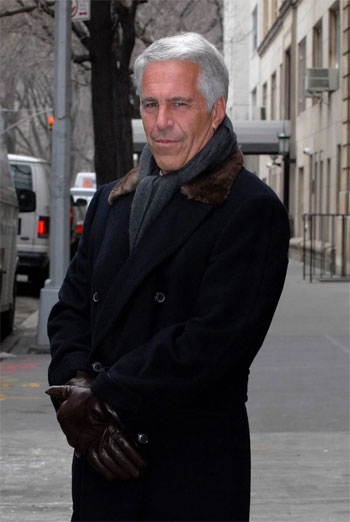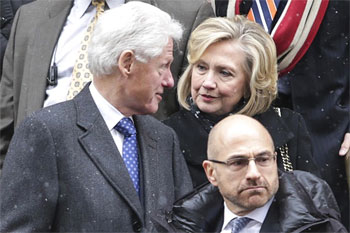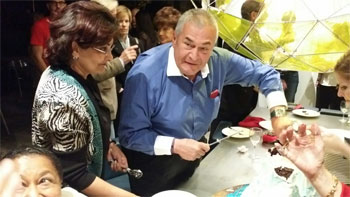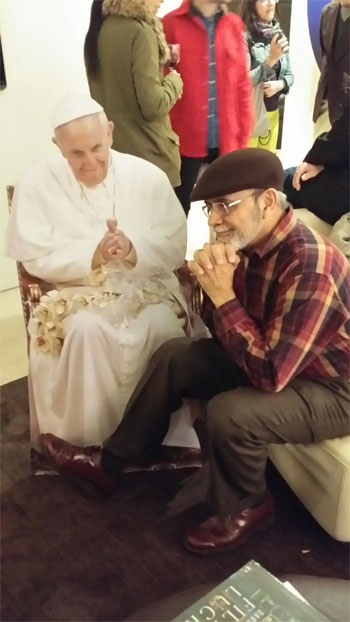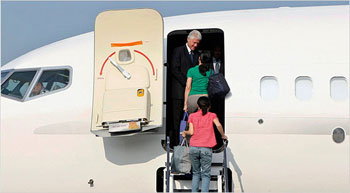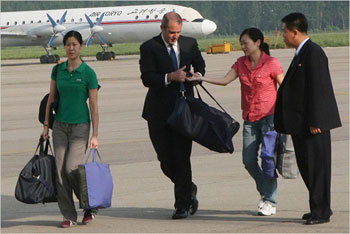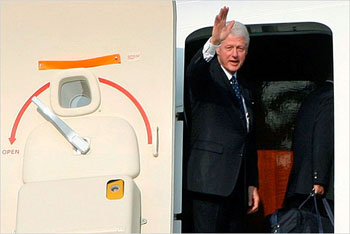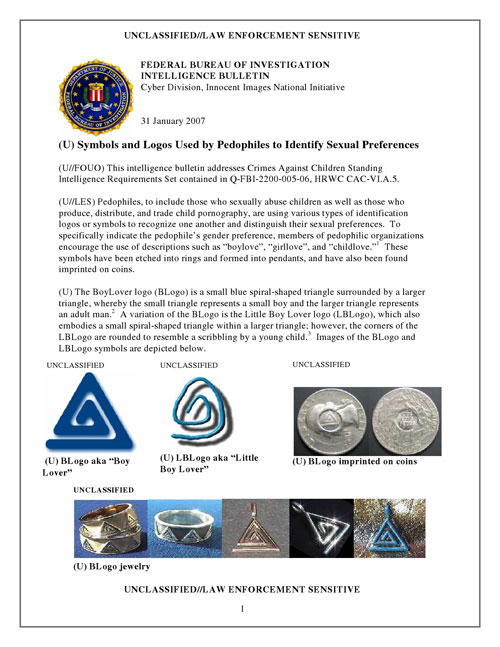by Todd S. Purdum
July, 2008
NOTICE: THIS WORK MAY BE PROTECTED BY COPYRIGHT
YOU ARE REQUIRED TO READ THE COPYRIGHT NOTICE AT THIS LINK BEFORE YOU READ THE FOLLOWING WORK, THAT IS AVAILABLE SOLELY FOR PRIVATE STUDY, SCHOLARSHIP OR RESEARCH PURSUANT TO 17 U.S.C. SECTION 107 AND 108. IN THE EVENT THAT THE LIBRARY DETERMINES THAT UNLAWFUL COPYING OF THIS WORK HAS OCCURRED, THE LIBRARY HAS THE RIGHT TO BLOCK THE I.P. ADDRESS AT WHICH THE UNLAWFUL COPYING APPEARED TO HAVE OCCURRED. THANK YOU FOR RESPECTING THE RIGHTS OF COPYRIGHT OWNERS.
Old friends and longtime aides are wringing their hands over Bill Clinton’s post–White House escapades, from the dubious (and secretive) business associations to the media blowups that have bruised his wife’s campaign, to the private-jetting around with a skirt-chasing, scandal-tinged posse. Some point to Clinton’s medical traumas; others blame sheer selfishness, and the absence of anyone who can say “no.” Exploring Clintonworld, the author asks if the former president will be consumed by his own worst self.
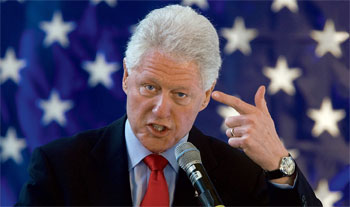
Former president Bill Clinton campaigning in Richmond on behalf of his wife during the run-up to the 2008 Virginia primary, which Hillary Clinton would lose to Barack Obama.
Photograph by Paul J. Richards.
It was a wedding straight out of Sex and the City: a rehearsal dinner looking out over the Eiffel Tower from the Trocadero, a garden ceremony and dancing reception in a grand château outside Paris, topped off by a private fireworks display. The groom was a thirtysomething American lawyer with friends in high places, the bride a dark-eyed designer with social sheen, and the guest list a mix of family and what Noël Coward once called Nescafé Society.
But the real cynosure of the occasion last August was the smiling, snowy-haired man who is the bride at every wedding and the corpse at every funeral he attends, the 42nd president of the United States, Bill Clinton. He had come to the City of Light with the motley crew that constitutes some of the post-presidential rat pack to celebrate the marriage of Douglas Band, the man who for the last decade has been his personal aide, gatekeeper, enforcer, and—more recently—counselor in the multifarious business, philanthropic, and political dealings that keep Clinton restlessly circling the globe.
Also in attendance was Ron Burkle, the California supermarket billionaire and investor who is Clinton’s bachelor buddy, fund-raiser, and business partner. Burkle had come with an attractive blonde, described by a fellow guest as “not much older than 19, if she was that.”
Burkle’s usual means of transport is the custom-converted Boeing 757 that Clinton calls “Ron Air” and that Burkle’s own circle of young aides privately refer to as “Air Fuck One.” Clinton himself had arrived on the private plane of another California friend, the real-estate heir, Democratic donor, liberal activist, and sometime movie and music producer Steve Bing, whose colorful private life includes fathering a child out of wedlock with the actress Elizabeth Hurley and suing the billionaire investor Kirk Kerkorian for invasion of privacy, alleging that private investigators for Kerkorian swiped Bing’s dental floss out of his trash in a successful effort to prove that Bing’s DNA matched that of a child delivered by Kerkorian’s ex-wife, the former tennis pro Lisa Bonder. (The suit was later settled out of court.)
In fairness, it should be said that Clinton’s entourage that weekend also included his daughter, Chelsea, and her boyfriend, Marc Mezvinsky, and no one who was there has adduced the slightest evidence that Clinton’s behavior was anything other than proper. Nor, indeed, is there any proof of post-presidential sexual indiscretions on Clinton’s part, despite a steady stream of tabloid speculation and Internet intimations that the Big Dog might be up to his old tricks. On any given visit to London, for example, Clinton is as apt to dine with Tony Blair or Kevin Spacey as with anyone who might raise an eyebrow.
But among the not-so-small cadre of Clinton friends and former aides, concern about the company the boss keeps is persistent, palpable, and pained. No former president of the United States has ever traveled with such a fast crowd, and most 61-year-old American men of Clinton’s generation don’t, either. “I just think those guys are radioactive,” one former aide to Clinton who is still in occasional affectionate touch with him told me recently, referring to Burkle and (to a lesser extent) Bing. “I stay far away from them.”
Another former aide, trusted by Clinton for his good judgment, said, “On the sort of money, women, all that stuff … I’m the bad guy. All this stuff is kept away from me. Whatever they’re doing, they definitely view me as somebody you cannot confide in.”
A longtime Clinton-watcher, who has had ties to the former president since his first campaign for governor of Arkansas, said of Clinton’s sometimes questionable associations, “I don’t know what to make of any of that, if it’s a voyeuristic experience, or if he’s participating in it.”
Yet another long-serving Clinton aide said simply, “If you figure it out, would you let me know?”
Bill Clinton’s relevance—and his presence in public life—is as close to permanent as any politician’s can be. Before touching off a string of controversies in his wife’s campaign this year, he was among the most popular figures on the planet, one of only three Democratic presidents in the 20th century to serve two full terms. His looming presence will make him a factor in the Democratic vice-presidential sweepstakes, the fall campaign, and every future presidential election of his lifetime, whatever his wife’s fate.
I have covered Clinton on and off for 16 years, since his 1992 presidential campaign. I first really met him on New Year’s Eve 1994, when he shook my hand on the beach at Hilton Head Island, South Carolina, and let his eyes travel ever so subtly to the newly issued White House press pass hanging around my neck, so that he could know to say, “I’m glad you’re here, Todd.” As a White House correspondent for The New York Times for more than two years, I spent some part of almost every day watching, thinking about, worrying about, or writing about Clinton and his never-a-dull-moment presidency. I found it hard not to admire his roving intellect, his protean political talents, his outsize personality, and the tactical skill with which he eventually confronted the Republican congressional majority that bedeviled so much of his tenure. Clinton had no use for the string of pure and noble losers that had come to define the Democratic Party’s presidential prospects for so long. He wanted to win, and he knew how. (I should add, by way of disclosure, that my wife, Dee Dee Myers, was Clinton’s first press secretary. They have not been in regular contact since she left the White House, and she has not been a source for this article.)
To know Clinton is, sooner or later, to be exasperated by his indiscipline and disappointed by his shortcomings. But through it all, it has been easy enough to retain an enduring admiration—even affection—for a president whose sins against decorum and the dignity of his office seemed venial in contrast to the systemic indifference, incompetence, corruption, and constitutional predations of his successor’s administration. That is, easy enough until now.
This winter, as Clinton moved with seeming abandon to stain his wife’s presidential campaign in the name of saving it, as disclosures about his dubious associates piled up, as his refusal to disclose the names of donors to his presidential library and foundation and his and his wife’s reluctance to release their income-tax returns created crippling and completely avoidable distractions for Hillary Clinton’s own long-suffering ambition, I found myself asking again and again, What’s the matter with him?
As I sought to answer that question for myself, in conversations with dozens of current and onetime Clinton aides, many of whom I have known all these years (Clinton himself declined to be interviewed), I realized just how much about the former president is not known, and not knowable, at the moment, mostly because of his unapologetic stonewalling. Virtually no one, except Ron Burkle, knows just what Clinton put into Burkle’s investment business, or just what he has done since to earn millions of dollars, with the prospect of reaping millions more. Most of the names of the donors who have contributed some $500 million to Clinton’s library and foundation over the past decade are not known, either. Virtually no one, except his doctors and family, knows the precise state of Clinton’s health. Virtually no one really knows what strategic role he has played in his wife’s campaign.
A CAVERNOUS NARCISSISM
So what can be known, or fairly inferred, from the available record?
There is reason to believe that Clinton, who never made more than $35,000 a year as governor of Arkansas and left the White House about $12 million in debt, has had his head turned by his ability to enjoy his post-presidential status; that the world of rich friends, adoring fans, and borrowed jets in which he travels has skewed his judgment or, at a minimum, created uncomfortable appearances of impropriety. There is ample evidence that his eight-year absence from a political workplace that has changed radically in the interim has left him conspicuously rusty at the craft of which he was once a master. There are those friends who worry that Clinton has never been the same since his quadruple-bypass surgery, in 2004, and the unexpected follow-up operation six months later to remove accumulated scar tissue on his lung.
“There’s an anger in him that I find surprising,” one senior aide, who has known and served both Clintons for years, told me this spring. “There seems to be an abiding anger in him, and not just the summer thunderstorms of old. He has been called into question repeatedly by top staff. The fact is, you can only weigh in so often on this stuff. It’s just a huge force of nature.”
It may well have been Clinton’s displaced anger (at the media, the Obama campaign, or both) on his wife’s behalf that led to his charged performance in the South Carolina primary, where he campaigned extensively against the wishes of Hillary’s high command in the mistaken belief that he could help her among black voters. He not only failed to do so but damaged his own relations with many prominent blacks, just as black voters were flocking to Barack Obama for the first time in large numbers. Hillary’s campaign was arguably never the same again.
It is also possible that all these influences have combined to make the cavernous narcissism that has always driven Clinton, for better and worse, at last consume the man almost completely. It was Clinton’s political genius to position the Democratic Party, for the first time in a generation, as the champion of those who “work hard and play by the rules.” In his own life, he has always followed only the first half of that dictum, and has never been fastidious about appearances, in ways charming and not. At a private meeting in New York City in 1992, AIDS activists, who were lobbying Clinton to include a speaker with AIDS at the Democratic convention that summer, presented him with a big batch of condoms, and a participant told me at the time that Clinton instantly replied, “My staff thinks this is the last thing I need.” Less amusingly, in the run-up to the 1996 re-election campaign, when Clinton took one of his many fund-raising trips to California, I teasingly asked his press secretary, Mike McCurry, whether the president intended to go jogging with Eleanor Mondale, the daughter of the former vice president—as he had on a previous trip—after he was spotted with her (and Barbra Streisand) in the wee hours of the morning. The next day, as we boarded the plane at Andrews Air Force Base en route to Los Angeles, McCurry, whose effectiveness as Clinton’s spokesman was aided by the fact that he never fell in love with him, sidled up to me and told me that he had passed my question on to the president, and that Clinton had responded, in vivid terms he knew I could not print, that I should not confuse exercise with extracurricular activity.
Only much later would the world learn that no less an informed observer than Monica Lewinsky, whose judgment, in hindsight, has often seemed sounder than the president’s, had taken note of Mondale’s presence at his side. According to Andrew Morton’s authorized account Monica’s Story, Lewinsky flew into a swivet when she was once stopped at the White House gate on her way to a hoped-for meeting to deliver Christmas gifts to the president. While waiting, she learned that Mondale was with him in the White House.
“Do you think I would be stupid enough to go running with someone I was foolin’ with?,” Clinton later asked Lewinsky. Without missing a beat, she replied, “Do you want me to answer that?”
THE “BUTT BOY”
By most accounts, including his own, Clinton struggled to find his footing in the early days of his post-presidency. “I was lost for three weeks after I left the White House,” he said on the campaign trail this winter. “Nobody ever played a song anymore. I had no idea where I was.” He had ended his administration in a firestorm of criticism over his eleventh-hour pardon of a raft of assorted miscreants, including the fugitive financier Marc Rich, whose ex-wife, Denise, contributed $450,000 to Clinton’s presidential-library fund, approximately $1 million to Democratic causes, including $70,000 to a fund supporting Hillary Clinton’s Senate campaign, and $7,000 worth of furniture for the Clintons’ new home in Chappaqua, in suburban Westchester County.
“When he first started transitioning, it was hard,” one former longtime aide told me. “But then he said to me, ‘I’ve always been a guy who could bloom where I was planted.’ I’ve been impressed by how truly happy he’s been as an ex-president. He’s much more focused than I would ever think he would be.”
Soon enough, Clinton was busy with plans for his library, and for the foundation that would not only build it but would undertake philanthropic and policy projects around the world; with paid speeches at $150,000 to $250,000 apiece; and with the writing of what would become his best-selling memoir, My Life, published in 2004. Deeply in debt with Whitewater- and impeachment-related legal bills, he set about earning an income that would “support a senator,” as he put it. He more than succeeded. This spring, when the Clintons—under intense pressure from Barack Obama and the news media—at last released their income-tax returns for the years since they left the White House, the total haul amounted to a staggering $109 million. Included in that total, besides Hillary Clinton’s Senate salary and Bill Clinton’s presidential pension, were $10 million in book income for Hillary and $29 million in book income for Bill, along with $51 million in speaking fees for the former president.
The command center for Bill Clinton Inc. is the former president’s penthouse office on 125th Street, in Harlem, and the go-to guy in the operation is a figure barely known to the public but a center of controversy in Clintonworld: Doug Band. Band, 35, joined the White House as an intern in the counsel’s office in 1995 and by the end of the administration was the president’s personal aide, or “butt boy,” the person responsible for making sure the president wakes up on time in the morning and stays on schedule during the day, and for peering around the corner of the president’s existence 24-7, at home and on the road, to make sure he has everything he needs (lunch, tie, speech, hat, golf clubs, a handy bathroom) and avoids everything unnecessary, unwanted, and undesirable (you get the drift). Band was the fourth young person to hold that job in Clinton’s White House tenure, and he holds some vestigial elements of it but has also moved far beyond. In Clinton’s post-presidential years, Band, who earned a master’s and a law degree by studying nights at Georgetown, has expanded his duties. His official title is “counselor,” and Clinton credits him with helping to conceive the Clinton Global Initiative, the annual conference on venture philanthropy that brings together movers and shakers from the worlds of business, charity, and academia to tackle problems ranging from poverty to climate change.
Band can be brusque and aggressive for a person whose job it is not to be noticed. In 2001, when I wrote about Chelsea Clinton’s graduation from Stanford for The New York Times and noted that a number of former White House staffers, including Band’s predecessor, Kris Engskov, a bright young Arkansan, were on hand in Palo Alto to help out with logistics, I got a call the next morning from Band, curtly reminding me that he, not Engskov, was now the man who managed the former president’s cell phone.
Last fall, Band fired off a stern letter to Nino Selimaj, owner of the Osso Buco restaurant, on University Place in Manhattan, demanding that a photograph of Selimaj with Chelsea Clinton that had hung in the restaurant’s window for five years (in the time-honored tradition of publicizing celebrity patronage, but to Chelsea’s apparent annoyance) be taken down forthwith. “Ms. Clinton, a private citizen, was not consulted prior to this picture being displayed, and thus, her permission was not given for you to do so,” Band wrote. Selimaj, a Hillary Clinton supporter, was crushed but left the picture up until this April when he removed it to make room for a new batch of photos.
A former Clinton aide acknowledged, “He’s a real point of animus from Hillaryland.” In 2004, Maggie Williams, Hillary Clinton’s former White House chief of staff, who had gone on to help establish Clinton’s foundation as his post-presidential chief of staff, left her job after two and a half years at least partly, she told friends, because Band rubbed too many people the wrong way, perhaps unintentionally, and made too much work for her. Williams, who took over Hillary Clinton’s struggling campaign in a staff shake-up this spring, has told intimates that while Band is not one of her favorites she had other, more personal, reasons for moving on. But one of Williams’s former colleagues and friends told me, “Maggie said, ‘That’s it. I’m done,’ because Doug does not show good judgment all the time.”
A range of Clinton loyalists complain privately that Band does not keep Clinton away from people like Burkle and Bing, who attended Band’s wedding to Lily Rafii, a glamorous designer of high-end handbags, belts, and other accessories.
A CLASSIC CLINTON VACUUM
The most pointed criticism of Band is precisely this: that he does not possess what Clinton has always needed in a string of strong-willed aides, such as his gubernatorial chief of staff Betsey Wright, or his director of Oval Office operations, Nancy Hernreich—the judgment to save him from himself. The origins of such criticism may lie in the fact that one of his predecessors as personal aide, Stephen Goodin, was cited, together with Hernreich, in the Starr Report as having tried to keep Monica Lewinsky away from the president, while Band, then only an intern, escorted her to a White House party, at her request.
“It’s a classic Clinton vacuum, in my opinion,” one former aide told me, referring to the inability of Band—or perhaps anyone—to monitor the company Clinton keeps. “He surrounds himself with people sometimes who are really good or really bad, and there’s rarely any in-between.”
Band’s supporters among Clinton’s longtime circle say most of the criticism means he is doing his job. “In my experience, he’s pretty good at protecting a guy who, you know, everybody wants to grab his sleeve,” former Clinton chief of staff John Podesta told me. “He pushes back hard.” Even some who do not always admire his hard-charging style say he kept conscientious, worried vigil during Clinton’s 2004 heart surgery and that Hillary relied on him greatly.
Band’s defenders say that complaints about his judgment are misplaced, and are really complaints about Clinton’s judgment. Band himself declined to be interviewed. But someone who knows him well said that he was sure Band was unhappy and surprised by the presence of Burkle’s young date at his wedding, and that to the degree that Band has ruffled feathers or made enemies by saying “no” to various supplicants, friends, and favor seekers who believe Clinton should acquiesce to them, he has done so with the president’s and his family’s best interests at heart.
Over the last few years, aides have winced at repeated tabloid reports about Clinton’s episodic friendship and occasional dinners out with Belinda Stronach, a twice-divorced billionaire auto-parts heiress and member of the Canadian Parliament 20 years his junior, or at more recent high-end Hollywood dinner-party gossip that Clinton has been seen visiting with the actress Gina Gershon in California. There has been talk of a female friend in Chappaqua, a woman in a bar at a meeting of the Aspen Institute, and a public sighting of Clinton, Bing, and a ravishing entourage in a New York elevator that, a former Clinton aide told me, led a business leader who saw them to say: I don’t know what the guy was doing, but it was so clear that it was just no good.
None of these wisps of smoke have produced a public fire. But four former Clinton aides told me that, about 18 months ago, one of the president’s former assistants, who still advises him on political matters, had heard so many complaints about such reports from Clinton supporters around the country that he felt compelled to try to conduct what one of these aides called an “intervention,” because, the aide believed, “Clinton was apparently seeing a lot of women on the road.” The would-be intercessor was rebuffed by people around Clinton before ever getting an audience with the former president, and another aide told me that the effort was not well received by either Bill or Hillary Clinton and that some Hillarylanders, in particular, were in denial about the continuing political risks that Bill’s behavior might pose.
The sensitivity among Clinton’s staff to these questions is such that, after I posed some queries about Clinton’s relationship with Burkle and Co., a spokesman, Jay Carson, e-mailed me this comment: “The ills of the Democratic Party can be seen perfectly in the willingness of fellow Democrats to say bad things about President Clinton. If you ask any Republican about Reagan they will say he still makes the sun rise in the morning, but if you ask Democrats about their only two-term president in 80 years, a man who took the party from the wilderness of loserdom to the White House and created the strongest economy in American history, they’d rather be quoted saying what a reporter wants to hear than protect a strong brand for the party. Republicans look at this behavior and laugh at us.”
Whatever the facts of Clinton’s personal life, it is beyond dispute that he has associated with some decidedly unpresidential company. In 2002, Clinton flew to Africa with the New York investor Jeffrey Epstein on his private Boeing 727 on an anti-AIDS and economic-development mission. (Others on the mission included Kevin Spacey and the comedian Chris Tucker.) In 2006, Epstein was indicted on state charges of soliciting prostitution in Palm Beach, Florida, and he later came under investigation by federal authorities amid allegations that he hired under-age girls for massages and more in a house stocked with sex toys and genitalia-shaped soaps. He remains the subject of at least four pending civil lawsuits from young women and is reportedly expected to accept a plea deal on a state charge that would give him 18 months in prison, followed by house arrest, in lieu of a trial now set to begin this month.
When I asked several Clinton aides and friends why the boss hung around with people like Burkle and Bing, they suggested various reasons. Bing, 43, who helped finance Shine a Light, the recent Martin Scorsese documentary about the Rolling Stones, and who has given tens of millions to environmental and other causes dear to Clinton’s heart in recent years, is described as very well read, thoughtful, interesting—and willing to stay up long into the night indulging Clinton’s craving for conversational companionship. (A spokesman for Bing said he would have no comment.)
Burkle, 55, a onetime supermarket boxboy who eventually parlayed ownership of several grocery chains into a fortune that Forbes magazine estimates to be at least $3.5 billion, is said to have bonded with Clinton over their shared origins as outsiders who rose to the very biggest leagues. They met during Clinton’s 1992 campaign, after the Los Angeles riots, and Burkle’s union-friendly stance and support for a range of Democratic causes quickly endeared him to Clinton. A former Burkle associate told me that Burkle has always been careful to conduct his own social life discreetly in Clinton’s presence, but would not deny that the divorced Burkle leads what he euphemistically called a “European lifestyle.” And, the former associate added, “how many older guys wouldn’t want to hang out with younger girls, if they could? Would you rather hang out with a smart, good-looking 20-year-old, or a 45-year-old?”
One person, who has worked at the highest levels for both Clintons, told me that Clinton’s association with such people “just shows poor judgment, for someone who understands political calculations the way he does, and the subtleties as he does, that he puts himself in that position.”
BUSINESS WITH BURKLE
In his book Giving, an extended Hallmark hymn to the virtues of venture philanthropy, Clinton writes that Burkle’s provision of post–White House work was the “only private sector offer I accepted” upon leaving office. In fact, that is not true: Clinton has also collected more than $3 million in consulting fees from InfoUSA, a data-mining company headed by a longtime contributor, Vinod Gupta, a Nebraska multi-millionaire who has raised hundreds of thousands of dollars for the Clintons’ campaigns. The company has drawn media scrutiny for allegedly selling consumer data about vulnerable senior citizens to unscrupulous telemarketers, and some shareholders once sued InfoUSA, charging that Gupta wasted nearly $1 million in company funds flying the Clintons around the world. (InfoUSA did not respond to a request for comment.)
But Clinton’s business relationship with Burkle is far and away his largest source of income after books and speeches: $15.4 million between 2003 and 2007, according to the Clintons’ recently released tax returns. That amounts to about 20 percent of all the income that Clinton earned in those years. Until the release of the tax returns this year, Hillary Clinton’s Senate financial-disclosure forms had revealed only that Clinton earned “more than $1,000” a year from his partnerships with Burkle.
Burkle is perhaps the single best example of the self-reinforcing network of rich personal, charitable, political, and business supporters Clinton has built since his White House years. For Clinton’s re-election campaign Burkle held regular fund-raisers at Green Acres, his sprawling estate in Beverly Hills, which once belonged to the silent-film star Harold Lloyd, and Burkle has also raised millions of dollars for Hillary Clinton’s campaigns. What has Clinton done in return? Burkle himself has said that Clinton has provided invaluable introductions and entrée to potential investors, including the Teamsters union. (A spokesman for Burkle’s companies did not return repeated telephone calls seeking comment.) When the tax returns were made public this spring, Jay Carson issued a statement saying that “the president provides his best advice on potential investments, advocates generally on behalf of the funds, and seeks to create opportunities for investors to consider investing in these funds or in the investments the funds make.”
The Burkle partnership carries ample potential for conflicts—real and perceived—whether or not Hillary Clinton is ever president. For one thing, she lent her campaign $11.4 million this year, and because the Clintons’ finances are commingled, it would be difficult to discern whether money from Burkle-related ventures (or other potentially controversial sources of income) made its way into Clinton campaign coffers. Burkle’s other investors include an entity connected to Sheikh Mohammed bin Rashid al-Maktoum, the ruler of Dubai, whose regime has been cited for human-rights violations by the State Department. (Two years ago, Senator Clinton nevertheless opposed a Dubai-based company’s efforts to acquire control over the management of six United States ports.)
Over the years, Clinton has had three main business involvements with Burkle. The first is a broad advisory capacity, for which Clinton has been paid flat fees for work as a rainmaker and liaison between Burkle and various potential investors. In fact, a Clinton aide says, this accounts for all the money that Burkle has paid Clinton to date. As part of the advisory arrangement, Clinton received a stake—of unknown size—in two Burkle domestic investment funds, for which Clinton will see a profit only if annual returns exceed a certain threshold. They appear on track to do so, the aide says, but have so far not produced a payout for Clinton. The third strand is an international investment fund (which has also yet to generate cash returns for Clinton) in which the former president invested an undisclosed amount of his own money, along with Burkle and the same entity connected to Sheikh Mohammed. Clinton has the right to opt out of any controversial investments by this fund, as he recently did with an investment in China.
Doug Band, though not Clinton himself, was involved in another Burkle investment that produced embarrassment. As The Wall Street Journal reported last fall, Band helped introduce Burkle to Raffaello Follieri (an Italian entrepreneur and the boyfriend of the actress Anne Hathaway), who had a proposal to buy and develop properties being sold off by the Catholic Church. Band received a $400,000 finder’s fee for the transaction (which he has said he passed on to others involved). Burkle later sued Follieri for allegedly misappropriating funds to pay expenses. (The dispute was settled out of court.) A Clinton adviser told me that Follieri (who was recently charged with attempting to pass a bad check for $215,000 in New York; the charge was later dropped) had come with good references. (Attempts to reach Follieri were unsuccessful.)
This winter a Clinton spokesman announced that Clinton was moving to sever his ties with Burkle to avoid potential conflicts should Hillary Clinton become the Democratic nominee. But in fact, one Clinton aide told me, severing the ties is complicated because putting a value on the partnerships is difficult.
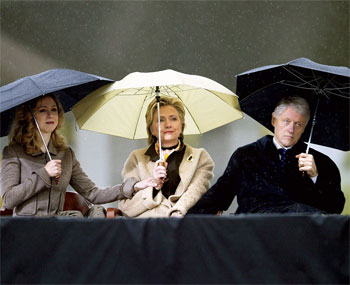
Bill Clinton, with Hillary and daughter Chelsea, braves the downpour that marred the 2004 dedication ceremony for the William J. Clinton Presidential Center, in Little Rock, Arkansas.
By Rick Wilking.
ON THE STUMP
In the middle of the so-called Potomac primary this winter—simultaneous elections in Maryland, Virginia, and the District of Columbia—I went to watch Clinton campaign for Hillary one Sunday in Baltimore County: at a senior-living complex in Catonsville and a gritty Democratic club in blue-collar Dundalk. Much of what I saw felt instantly recognizable: the fluid, conversational, extemporaneous style; the succinct statement of the case (“You ought to be for her because she’s spent a lifetime making the only kind of change that matters: making changes in other people’s lives”); the frequent pronouncements that something or other was “a big deal” (a favorite phrase in his presidency); and the genial stretchings of the truth.
“Now, when I got elected, I had the lowest net worth of any president of the 20th century,” Clinton told his appreciative audience at the Charlestown Retirement Community, blithely ignoring poor Harry Truman, who so struggled to make ends meet as a senator in Washington that he put his wife, Bess, on his office payroll at a higher salary than any other employee there. A moment later, Clinton invoked Truman to make a point about Hillary’s courage in fighting for universal health-insurance coverage, saying, “A lot of you remember that Harry Truman was the first president who tried to get universal health care for everybody. They beat his brains out and nearly destroyed his presidency, and he was a very great president.” Truman’s greatness is now in little dispute, but the contemporary criticism of his presidency had less to do with his drive for health care than with the Korean War.
But if much about Clinton is familiar to one who covered him in his prime, other aspects of his appearance and demeanor are unsettling. He is visibly older and thinner. His hair is whiter and his countenance paler. At times, as the day wears on, he makes an odd cotton-mouth sound, his tongue sticking to the roof of his mouth as he talks. “At some point in your life, which most of us in this room have reached,” he tells the seniors, “you realize that even if you live to be 100—and I hope you all do, and a bunch of you will, by the way—you have more yesterdays than tomorrows.”
That, too, was a line Clinton liked to use in the White House, but it rings differently at 61 than it did at 46 or 50. By the standards of the males in his family, Clinton is a very old man indeed. His father died at 28, three months before his son was born, and his maternal grandfather, who helped raise him, died at 58, so Clinton has long faced atypical intimations of his own mortality. Many of those who know him well say he now tires more easily, and loses energy.
POST-OP COMPLICATIONS
That is hardly surprising: not quite four years ago, Clinton underwent quadruple-bypass surgery to relieve blocked arteries in his heart, a procedure whose comparative commonness in the modern medical world belies the range of subtle, complex, and not always obvious complications that can follow it. “He’s recovered much, much more slowly from the heart surgery than anybody thought,” one former aide told me. “He still has energy, but not stamina. He can recover, but he used to do that nonstop, with three hours’ sleep.”
Just weeks after his triumphal encore appearance at the 2004 Democratic National Convention, in Boston, Clinton, who has suffered for years from esophageal reflux, the symptoms of which can sometimes mimic signs of cardiac trouble, complained of chest pains and shortness of breath, and an angiogram showed severely blocked arteries that doctors said meant he was doubtless headed for a major heart attack. On September 6, 2004, in surgery at NewYork-Presbyterian Hospital/Columbia University Medical Center, Clinton’s breastbone was cut open, his chest pulled apart. His heart was stopped for 73 minutes while a heart-lung machine maintained his body’s flow of blood and breathing, and surgeons took blood vessels from his chest and his left leg to create detours around the segments of arteries in his heart that were severely clogged with plaque—more than 90 percent blocked in some cases.
Six months later, as the result of a rare and unexpected complication, Clinton had a second surgery to remove a rubbery rind of scar tissue caused by the accumulation of bloody fluid in the lower lobe of his left lung; the tissue had cut his breathing capacity by more than 25 percent. In this operation, known as a thoracotomy, an incision was made between a pair of Clinton’s ribs, and doctors spread them apart to make room for the insertion of surgical instruments that peeled off tissue surrounding the scar tissue and then the hard, rubbery rind. Experts describe the aftermath of such surgery as typically quite painful, much more painful than that of bypass surgery.
As a private citizen—albeit a very prominent one—Clinton has not received anything like the post-surgical media attention he would have if he were still president, and many details of his treatment in recent years are not known. After his first surgery, The New York Times reported that he would take a range of medications, including a beta-blocker to maintain regular heartbeats, a statin to lower his cholesterol, an ace inhibitor to control high blood pressure, and aspirin to thin his blood. These medications may cause a range of side effects, including fatigue, muscle pain, dehydration, depression, and impotence. Coronary bypass can also cause subtle changes in cognition, which may, or may not, be temporary. There is further medical disagreement about whether such changes are caused in part by small particles of plaque that are discharged by the heart-lung machine and sent to the brain, or by the underlying artery disease itself. If a patient has arterial disease in his heart, he could have it in his brain too.
“I would think mood changes would be a big issue in his life from that bypass surgery, especially having to go back a second time,” says Dr. Thomas Traill, a prominent cardiologist at the Johns Hopkins Hospital, in Baltimore, who is not involved in Clinton’s care. Many people who have bypass surgery get depressed afterward, while others suffer from increased irritability. “It’s very similar to postpartum depression. You deliver a child and then a week later it’s a dismal anticlimax. The same thing happens with heart surgery: you wonder if you’re going to make it, and then you wake up in the intensive-care unit and you’re the center of the universe, and a week later you’re exhausted and sore and about to be sent home.”
“It’s also true,” Traill adds, “that a lot of people are never really the same again, that their mood is not right. Some of that may have been triggered by the original illness and some by surgery. Then there’s a persistent problem: you’re taking medications, you’re under doctors’ care, and every day when you shave you know you’re not going to live forever. So whether or not he’s, as they like to say, clinically depressed, his mood cannot be the same as before this happened.”
THE GUILT FACTOR
Whatever the explanation, much of Clinton’s behavior on the campaign trail this year has been so maladroit as to constitute malpractice: his blowups at television reporters, his derisive dismissal of Obama’s unwavering anti-war stance as a “fairy tale,” and most of all his denigrating comparison of Obama’s performance in the South Carolina primary to Jesse Jackson’s victories there two decades ago (which even one of his closest former aides described to me as insensitive at best). Perhaps no figure in modern American politics has less standing to say “Shame on you!” than Bill Clinton, but he said just that—twice—to a hapless reporter who asked him in January about comments by a former South Carolina Democratic Party chairman comparing Clinton’s tactics to those of the late Lee Atwater, the take-no-prisoners Republican strategist known for racially charged campaigns.
As the days wore on, the former Senate Democratic majority leader Tom Daschle said Clinton’s behavior was “not keeping with the image of a former president.” His former labor secretary and onetime friend turned critic, Robert Reich, called Clinton’s attacks on Obama “ill-tempered and ill-founded.” No less a loquacious commentator than the Reverend Al Sharpton said that it was time for Clinton to just “shut up.” His old flame Gennifer Flowers, who has endorsed Hillary, referred to him as an “idiot husband.” Congressman James E. Clyburn of South Carolina, the highest-ranking black member of the House of Representatives, who pointedly had remained neutral in the primary, finally called Clinton’s behavior “bizarre.” And on more than one occasion, in one way or another, Senator Clinton herself had to tell him—as she did after he revived controversy over her imagined landing in Bosnia under sniper fire by unleashing a string of new inaccuracies to defend her—“Let me handle this.” There is little doubt that Clinton’s own intensity has fueled his wife’s. One senior aide told me bluntly that Bill’s anger “has not served her well. That side of him feeds the worst side of Hillary. He does stoke her up.”
Aides to both Clintons say part of the problem was that, until Maggie Williams came on board, no one from Hillary’s campaign was even tasked with routinely keeping Bill abreast of developments, so long-simmering tensions between her people and his were allowed to worsen. After Williams’s arrival, Clinton participated in a daily conference call with her and other top campaign advisers to review the state of the race that one aide said sometimes turned into a virtual monologue. “There’s not a detail that escapes his notice and commentary,” the aide said, “and as usual with Clinton, much of what he says is worth listening to.” Aides explain the depth of Bill Clinton’s involvement by invoking what one of them called “the guilt factor.”
“There’s this piece of him really wanting this desperately for her, for all of the reasons you can imagine,” this aide told me. “She put her career on hold to be with him I mean, it’s her time, and he feels that.” Clinton was also never cut out to be a supporting player. He is Gladys Knight and not a Pip, as his former aide Jamal Simmons, who now backs Obama, put it this spring.
The way Clinton handled the courtship of Senator Ted Kennedy in the run-up to Kennedy’s eventual endorsement of Obama is instructive. “Barack pursued Kennedy with a soft touch,” a person close to Kennedy told me. “He checked in every once in a while Counter that with the way the Clintons were handling him. There was nothing soft about the Clintons’ requests. Hillary would call and make a formal request. Clinton, as he felt Kennedy slipping away, would get more and more insistent, and he would make the whole conversation about how bad Obama was, not how good his wife was.”
LOSING A STEP
Clinton’s temper has continued to get the better of him. By the eve of the Pennsylvania primary, he was reduced, in a Philadelphia radio phone interview, to denying that his comments in South Carolina had been in any way racially charged, and instead insisted that the Obama camp “played the race card on me.” He sputtered, “I mean, this is just, you know … You really gotta go something to play the race card with me—my office is in Harlem.” At the end of the interview, apparently unaware that he was still on the air, Clinton was heard to say, “I don’t think I should take any shit from anybody on that, do you?” Asked the next day by another reporter what he had meant by saying the Obama campaign “was playing the race card,” Clinton would have none of it. “No, no, no, that’s not what I said,” he erupted, as if he did not know that his earlier comments had been recorded and were all over the Internet. He added, “You always follow me around and play these little games, and I’m not going to play your games today.” It’s a nice question, just who was playing the games. When I asked a Clinton campaign official how the former president could have issued such a flat denial, the aide immediately responded, with no trace of irony, that the offending reporter had used the word “playing,” while in the radio interview Clinton had used the word “played.” I’m not sure whether that makes Clinton’s outburst better or worse, but it’s of a piece with the parser the public knows so well.
As the primaries ground on, the campaign deployed Clinton more strategically (and, perhaps, more effectively) in the kinds of smaller towns presidents never visit—47 stops in Pennsylvania, 39 in Indiana, 50 in North Carolina—where he stumped in largely white, working-class areas but, poignantly for a man once dubbed the nation’s “first black president,” not in African-American ones. That sea change in Clinton’s standing among blacks will remain a consideration in how to use him, or not use him, in the general-election campaign, no matter who the Democratic nominee.
I saw Clinton at two of his nine stops on the day before the North Carolina primary in May. He was himself, for good and bad. In Zebulon, population 4,329, he arrived one hour and seven minutes late to speak to a crowd of 500 or so, talked for 40 minutes on topics from the Iraq war to hybrid cars, adoption and foster-care policy, and mortgage foreclosures, and concluded, in a repeated refrain that took on the insistence of a preacher’s call, that Hillary’s campaign had been carried along by “people like you in places like this.” Minutes later, after a front-porch rally in nearby Louisburg, population 3,726, a woman in the crowd approached him, tears streaming down her face. I could not get close enough to hear what was said, but Clinton listened, then cupped her face in his big hands, in that way that only he can. It was classic Clinton, but not enough to prevent an Obama blowout in the state the next day.
Perhaps more than anything, Clinton, whose audiences in recent years have tended to be adoring crowds who hang on every word of what those who have heard his standard speech say is a rambling tour d’horizon of world problems, has simply lost a step.
“Look, the game has changed,” said Mike McCurry. “He ran his last national campaign in 1996, and remember, we kind of ran unopposed. It’s been a while since he did that, and the way you summon people up and get them to do things has changed. All of this stuff, the blogging and the YouTubing and the way in which everything is instantaneously available: I tell you, until you get out there and are actually dealing with the consequences—having what you just said as you were walking out the door [all over the Internet], that’s brand-new to him.”
A DICTATOR’S EMBRACE
When Clinton left the White House, aides say, he made a list of all the world problems he cared most about and might yet do something to help solve. At the top of his list was Mideast peace, but Clinton quickly realized that that was an endeavor in which uninvited meddling was inappropriate, so he concentrated on a range of other issues, from H.I.V./AIDS to clean water, childhood obesity, global warming, and—after the South Asian tsunami and Hurricane Katrina—disaster relief. Some aides have said they see a clear effort to redress problems that he let fester as president, whether AIDS or the Rwandan genocide. It is beyond dispute that Clinton’s foundation has done worthy work around the world, funneling low-cost anti-retroviral drugs to more than a million AIDS patients, shining the singular power of a presidential spotlight on the good work of others, and raising millions of dollars for practical programs in places much of the world’s power establishment never bothers with.
But it is also beyond dispute that Clinton has blended the altruistic efforts of his philanthropy with the private business interests of some of his biggest donors in ways that are surpassingly sloppy, if not unseemly, for any former president. A case in point is Clinton’s relationship with Ukraine’s Victor Pinchuk, a billionaire and philanthropist who has donated millions to the ex-president’s foundation. According to Newsweek, in 2007, at a Pinchuk-sponsored international conference in Yalta, Clinton wowed the crowd with a presentation on Ukraine but also sparked controversy when he was embraced by Pinchuk’s father-in-law, the country’s former president Leonid Kuchma. Kuchma’s repressive regime has been linked by a government investigation to the 2000 murder of a dissident Ukrainian journalist. The man was found decapitated—one of scores of journalists who have been killed or have disappeared in Ukraine since the country achieved independence, in 1991.
Even more troubling is Clinton’s relationship with the Canadian mining magnate Frank Giustra. This winter, a lengthy investigative report in The New York Times disclosed that, in 2005, Clinton flew to the Central Asian country of Kazakhstan on Giustra’s MD-87 jet for what was billed as a philanthropic three-country tour. The two men had dinner with President Nursultan Nazarbayev, who has held the country in a vise-like grip for nearly two decades. At their meeting, Clinton expressed support for Nazarbayev’s bid to head the Organization for Security and Co-operation in Europe, which monitors elections and promotes democracy. That position was sharply at odds with official American foreign policy and came in the face of stinging criticism of Kazakhstan’s record on human rights from many sources, including the junior senator from New York, Hillary Rodham Clinton. Within two days, Giustra’s company signed preliminary agreements allowing it to buy into three uranium projects controlled by Kazakhstan’s state-owned uranium agency. And months after that the Clinton Foundation received a $31.3 million donation from Giustra that remained secret until a Giustra representative acknowledged it late last year. (Giustra has separately pledged another $100 million to the foundation.)
A Clinton spokesperson and Giustra have both said that Clinton was unaware of the specifics of the uranium deal. But critics of Clinton’s judgment say that misses the point.
“There’s no way in the world that President Clinton didn’t understand what was going on there, and no way in the world that he didn’t understand what his role was supposed to be in that visit: to lay the hands of the former president of the United States on the individual he was traveling with and thereby bring credibility to whatever reason that individual was there for,” says Fred Wertheimer, the president of Democracy 21, a Washington watchdog group that monitors money and politics. “To deny that is to, basically, take the position that you can fool all of the people all of the time.”
THE PUBLIC PENSIONER
It is for just such reasons that Clinton’s refusal to make public the names of donors to his foundation has drawn withering fire. (Some donors—including the Saudi royal family and the governments of Dubai, Kuwait, and Qatar—were made public by The New York Sun when a list of them was discovered on a public computer monitor at the opening of the Clinton library, in Little Rock, and others have since become known as the result of interviews and journalistic digging through the tax records of known Clinton friends and supporters.) Clinton aides say that donors were promised confidentiality, but they have also pledged to make public the names of future donors—though not past ones—should Hillary Clinton become president.
“I think there’s also a kind of sentiment that if somebody’s given us money to save the lives of tens of thousands of kids who have H.I.V., let somebody fucking bitch about it,” one senior Clinton adviser told me. “If they don’t want us to take that money, or if it offends some sensibility of Fred Wertheimer, so be it.”
Clinton is under no legal obligation to disclose such donors—or, for that matter, to disclose much of anything about his personal financial dealings. No one knows the details of the earnings—almost certainly many millions of dollars—that the first President Bush has made from his investment in the Carlyle Group, for example. Gerald Ford quietly raked in big director’s fees from companies such as American Express, and Ronald Reagan briefly scandalized late-80s Washington by taking $2 million for a single speaking trip to Japan. But their wives never ran for president.
Throughout our history there has been a strong presumption that former presidents should conduct their affairs in ways that do not seem to cheapen, degrade, or exploit the high office they held. Hillary Clinton’s own service as senator, and her presidential campaign, reinforce that imperative in Bill Clinton’s case. Harry Truman was so reluctant to accept any business or commercial offer, however high-minded, that might be seen as capitalizing on the presidency that he nearly went broke in retirement. A few years after leaving office, he had seen a $600,000 advance from Life magazine for his memoirs whittled away by expenses and 67 percent income taxes to a net gain of about $37,000. Only the sale of his family farm for a shopping center saved him from real embarrassment. Finally, he took his case to Speaker of the House Sam Rayburn and Senate majority leader Lyndon Johnson, and the first bill stipulating an annual presidential pension (initially $25,000) and money for offices and staff was passed.
Clinton benefits handsomely from Truman’s foresight. His presidential pension has totaled more than $1.2 million since he left office, and despite his fantastic private-sector income, an analysis this spring by the Web site Politico showed that he has taken almost as much in taxpayer dollars for his post-presidential existence as the other two living ex-presidents—Jimmy Carter and George H. W. Bush—combined. Since 2001, Clinton has received more in almost every category—pension, staff salaries, supplies—than any of his colleagues in that smallest of clubs. Before Ronald Reagan and Gerald Ford died, Clinton’s telephone and rent expenses came close to exceeding the comparable expenses for all four then living former presidents combined. Part of the difference is that Clinton served eight years in office, entitling him to a federal health-insurance plan and a higher pension than Ford, Carter, or Bush, and part is that his office space in Manhattan is more expensive than space in Atlanta or Houston.
Still, there is a repellent grandiosity about Clinton’s post-presidential style. Before he settled on more modest space in Harlem, Clinton had intended to rent the entire 56th floor of Carnegie Hall Tower, in Midtown, for roughly $738,000 a year. He changed course after a rash of sharp congressional and public criticism. Each year at Christmastime, Clinton sends out to supporters a slim, paperbound volume of his Selected Remarks, with a gold-embossed “Happy Holidays” greeting card replete with the requisite “bug” showing it was printed in a union shop. Last year’s number ran 25 pages and featured three thoroughly ordinary efforts: a commencement speech at Knox College, in Illinois; remarks to the Nelson Mandela Foundation, in South Africa; and comments at the 50th-anniversary commemoration of the de-segregation of Little Rock Central High School. “Since leaving office,” the first page of the booklet states, “President Clinton has devoted his time and energy to causes of both personal concern and global significance.”
A SOLITARY MAN
Throughout his career, Bill Clinton has justified acts of extraordinary selfishness in the name of idealism—he’s always in it for the people, the plain folks who tell pollsters they trust him to look out for their interests, even if they don’t trust him. He has been forgiven colossal egotism, even cruelty, by those closest to him because of his superlative political talents, and because of the overreaching of his enemies. As president, Clinton often could not show grace in the smallest ways. He dithered about where and when to go on vacation, so that aides and Secret Service agents could not plan their own. He declined to release aides and reporters who had waited around all through a pointless Saturday of duty while he made up his mind whether to play golf (a game at which he has been known to cheat). He was never, ever, on time. In Joe Klein’s roman à clef about the Clintons, Primary Colors, the Betsey Wright character accuses the Bill Clinton character of always skating by on charm and talent and need. “You have never paid the bill,” she tells him. “Never. And no one ever calls you on it. Because you’re so completely fucking special. Everyone was always so proud of you. And me, too. Me the worst.”
In the end, this is Clinton’s most grievous sin, his steady refusal to take grown-up responsibility for the consequences of his own actions. In the White House, on the day of his last sexual encounter with Monica Lewinsky, Clinton told her that he was worried that a foreign embassy might be listening in on their calls, and that if she were ever questioned, she should say they were just friends. Then he looked into her eyes and sang, “Try a Little Tenderness,” a song that goes: “She may be weary, women do get weary, wearing the same shabby dress.” On the day this winter that he accused Barack Obama of spinning a “fairy tale” about Obama’s anti-war stance, Clinton went on to whine about an Obama campaign research sheet criticizing his business dealings and insisting, “Ken Starr spent $70 million and indicted innocent people to find out that I wouldn’t take a nickel to see the cow jump over the moon.” So, yes, let us stipulate: Ken Starr was a prurient, partisan zealot. Yes, other ex-presidents have made a lot of money and it is hard to begrudge Clinton his earnings (even if he did take six million nickels for a speech to the Australian Council for the Peaceful Reunification of China). Yes, Obama is a daring opponent who thinks he is hot shit and has benefited from the same enthusiasm, energy, and fresh-faced appeal that a fella named Bill Clinton once elicited (but he has suffered from some of the same skepticism, too). It is Clinton’s invariable insistence that his problems are someone else’s fault, and that questions or criticisms of him, his methods, motives, or means are invariably unfair, that is his unforgivable flaw.
He has told friends that he is not worried that his aggressive performance this year has done lasting damage to his reputation (some of them are not so sure). Whatever the future holds for Hillary Clinton, her husband is not fading away. He will remain a presence, a force to be reckoned with, as long as he draws breath.
But for a politician with so many admirers, allies, acquaintances, faithful retainers, and hangers-on, Clinton remains a profoundly solitary man, associates say, without any real peers, intellectual equals, or genuine friends with whom he can share the sweetest things in life. (The one who has always come closest, for better and worse, for richer and poorer, is simply too busy these days.)
So he spends his time veering between feeling sorry for himself and working to help others, between doing good and giving his enemies fresh ammunition, between vindicating his legacy and vitiating it. “So much of modern culture is characterized by stories of self-indulgence and self-destruction,” Clinton writes near the end of Giving, from which he earned $6.3 million and gave away $1 million (or 16 percent) to charity. “So much of modern politics is focused not on honest differences of policy but on personal attacks. So much of modern media is dominated by people who earn fortunes by demeaning others, defining them by their worst moments, exploiting their agonies. Who’s happier? The uniters or the dividers? The builders or the breakers? The givers or the takers? I think you know the answer.”
I used to think he did, too. But substitute the words “my life” for the words “modern culture” and “modern politics” in the passage above, and you’ll have a pretty succinct summary of what Bill Clinton has, at last, become.
Todd S. Purdum is *Vanity Fair’*s national editor.

